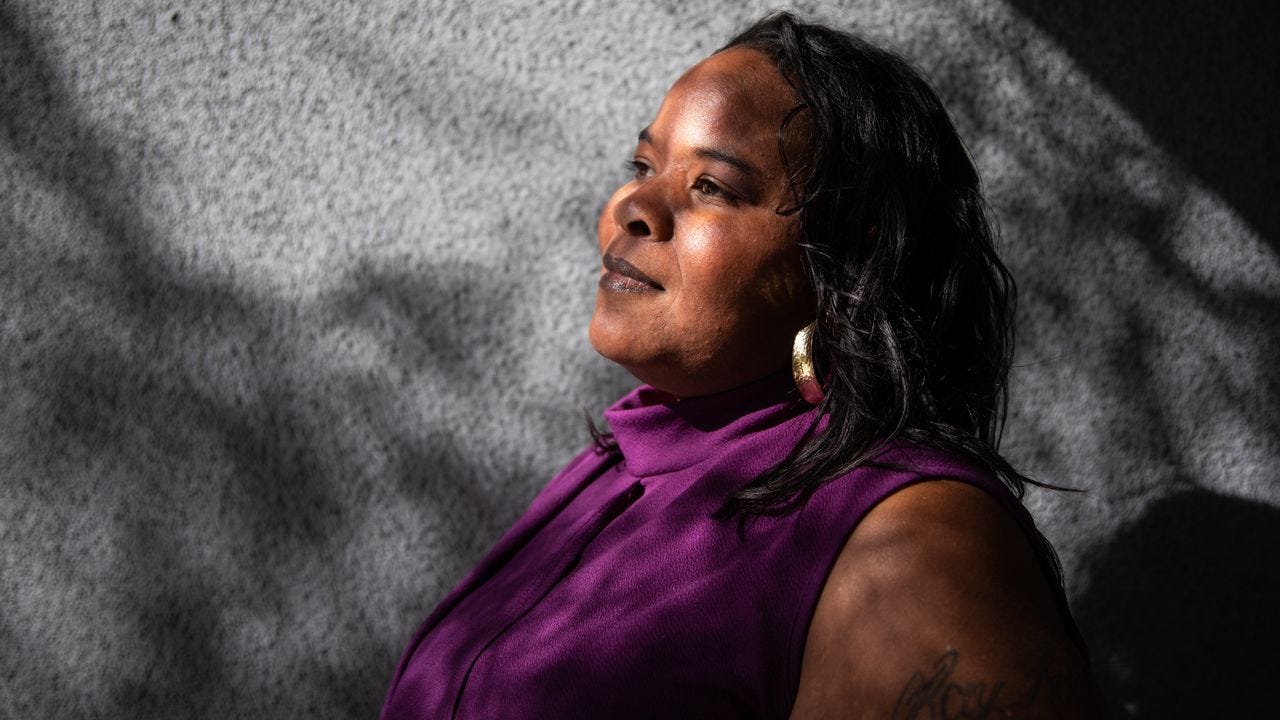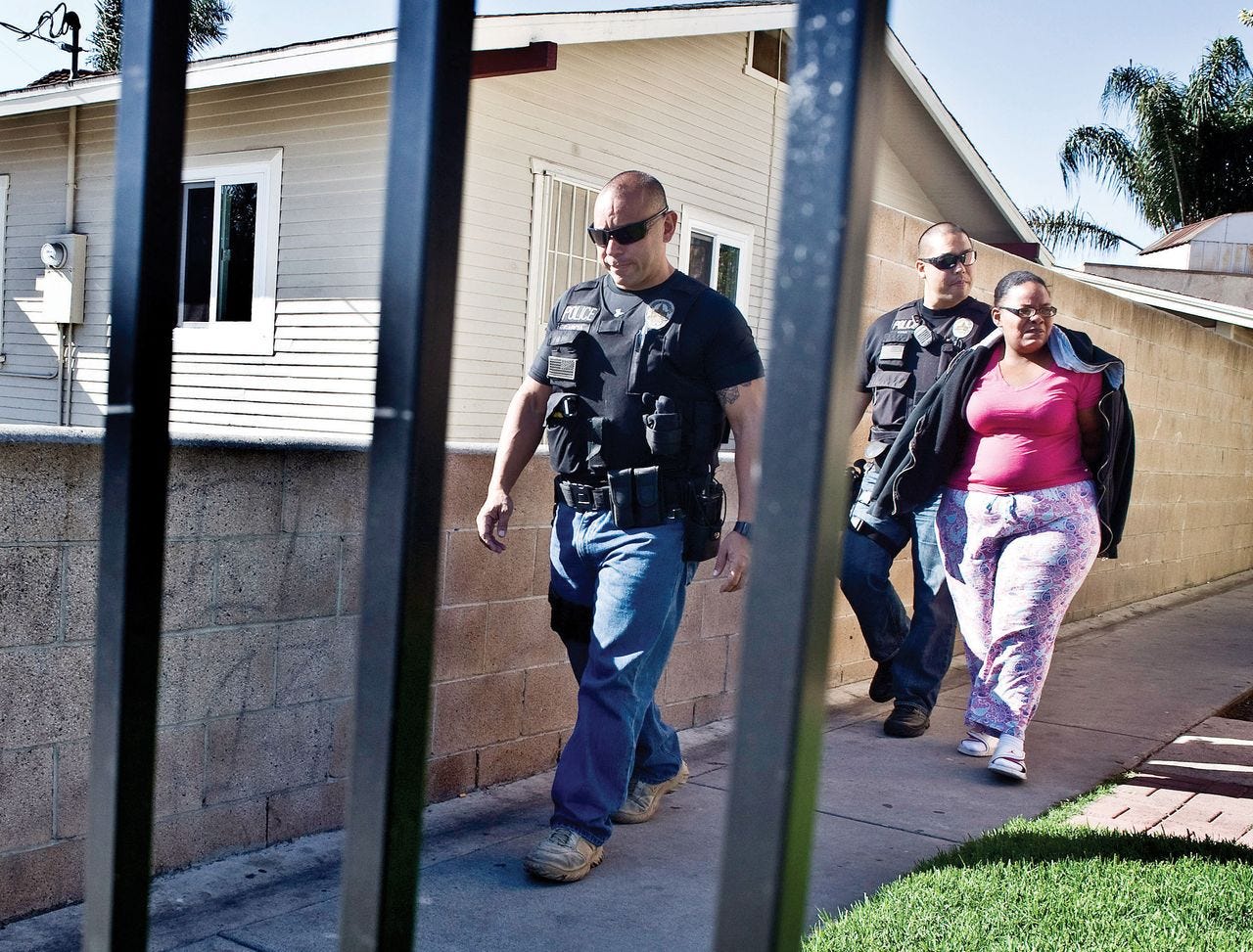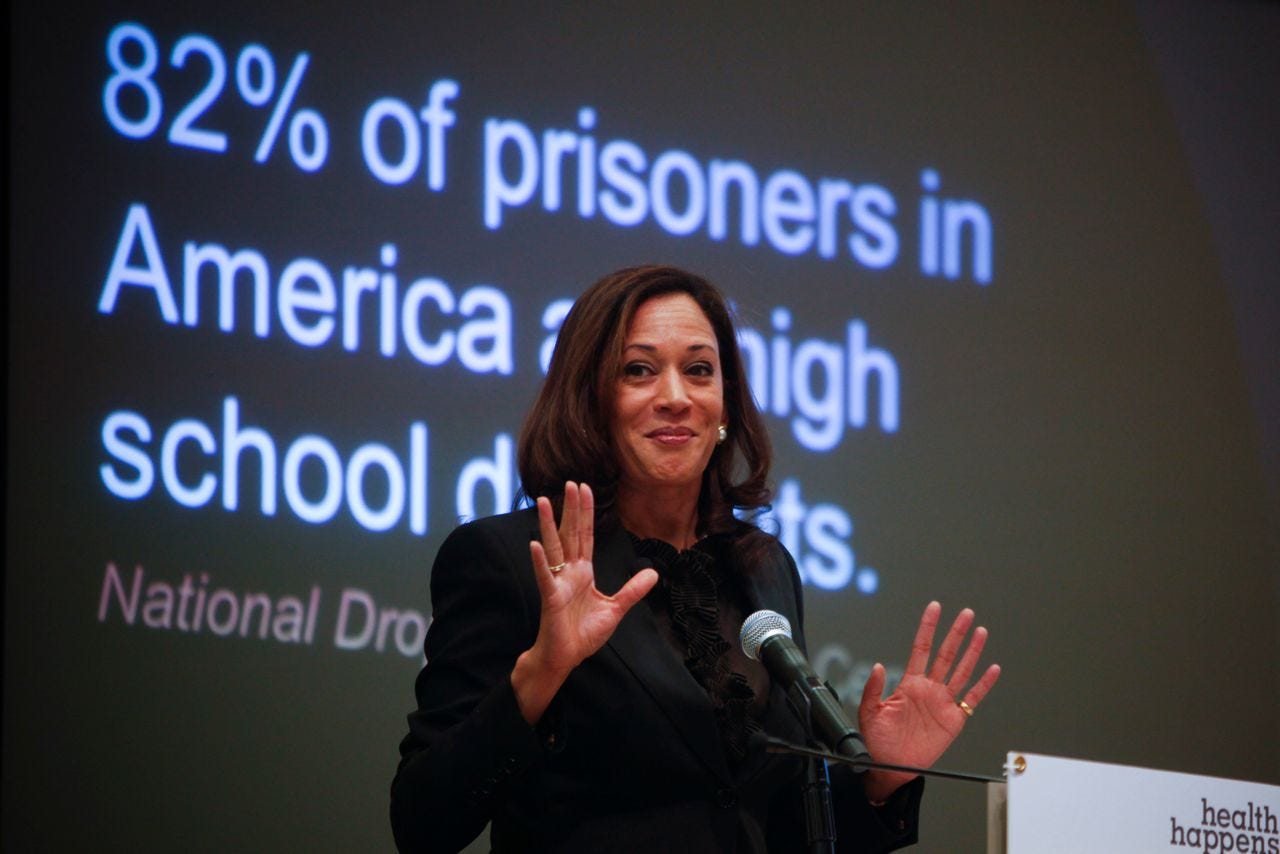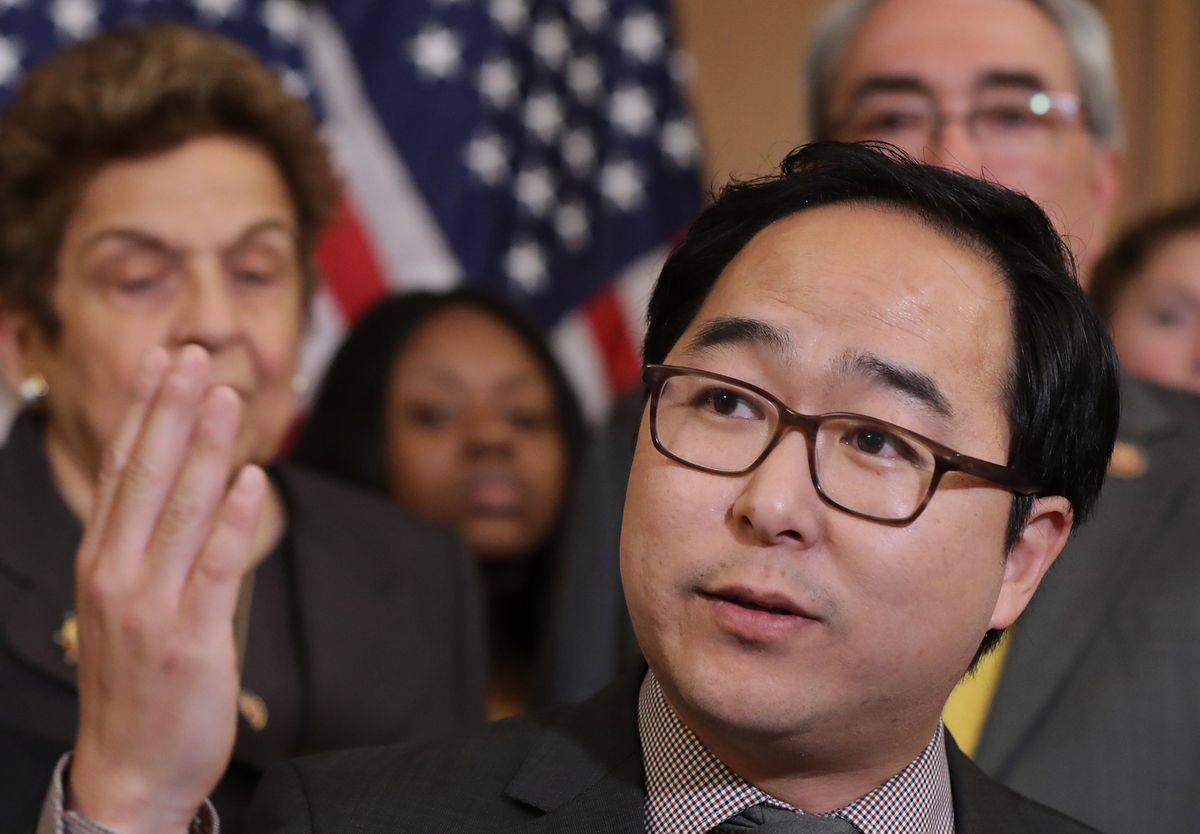Disabilities and Bullying and the Harris-Trump Road Show
Remember this?
Oh, yeah, that Messiah, Mister Rapist, Grifter, Dirtier than Dirt Kushner-Guided, Roy Cohen-Trained TRUMP: “My Uncle Donald Trump Told Me Disabled Americans Like My Son ‘Should Just Die’”
Read the Time Magazine article written by his nephew.
Here, reality check for democrats and republicans:
Some legit writing here from me to be published in “legit” media around my area:
When the whole world is silent, even one voice becomes powerful
“I’d like to have enough resources, money, to take a trip somewhere. I don’t want to be homeless if housing finds out I have extra money in my bank account.”
Seems like a wish for anyone supposedly in the land of the free – not to be homeless. Variations on this goal were broached at the Oct. 23-24 self-advocacy meeting at the Best Western at Agate Beach.
More than forty people attended the planning and visioning session to carve out some future collective goal to make change a community of people living in the developmental disability and neurodiverse world. One of the main organizers of this self-advocacy event is Julie Chick, Sammy’s Place Director, a nonprofit out of Nehalem.
I attended the event wearing several hats – an educator, an activist, journalist and assisting working with clients in the neurodiverse “world” with Essential Services. Right out of the blocks I asked Chick to synthesize what she got out of the two-day meeting.
What did you find valuable in the event?
“The person-to-person connections and relationships again can be taken for granted by those that easily access their community, and can be difficult if you have no wheels or knowledge of public transportation. Relationships of all types are the bedrock of humanity, yet some of the people in our DD system had not had much opportunity to get out and make friends. These folks have been meeting though this self-advocacy work, Arc of Lincoln’s Day Services Activities, and Beach Buddies, and their circle is growing with some coming in from other counties.”
The critical mass around self-advocacy is fighting for basic rights, like lifting up the maximum allowable savings and checking account balance above the draconian $2000 law.
With such a limit on money given to or earned by people living in subsidized housing, and those receiving disability payments from the government, and other services, like personal assistants, the fear losing those hard-fought safety nets is palatable.
Connecting with others along the coast, in the seven counties situated along the Pacific, the participants were passionate and determined to come away with tools to advocate for themselves not only politically, but through better transportation services, more opportunities to make money on the side with arts and crafts creations, and better ways to make personal connections, even romantic ones.
“I want to meet people who respect me for who I am and so I can follow my dreams,” stated advocate Frank Perdue. “I don’t understand why ‘normal’ people don’t want to go out on dates with people like us. We need better opportunities to meet people who think like us.”
For anyone interested in the complexities of life as a man or woman living in the neurodiverse world, a recent Hulu documentary might be their entry point. “Patrice” follows New Jersey school crossing guard Patrice Jetter. The kids love her, and she loves them.
She is also an amazing artist, entertainer and performer. She is romantically involved with Garry, who lives with cerebral palsy and uses a wheelchair. The story is about a commitment ceremony – between Patrice and Garry – since they were told their marriage quest would jeopardize their individual monthly social security stipends and their subsidized housing.
The documentary utilizes vérité footage of Patrice and Garry’s daily life, both together and apart. Their lives are at a rather challenging level just accomplishing daily routines like preparing a meal. Patrice walks with a cane and leg braces, whereas Garry uses a wheelchair and needs help into bed.
They both have their separate apartments, 20 minutes apart via bus. Also part of the movie is the handicapped-equipped van Patrice owns which breaks down for good in the documentary. Much of Patrice’s story focuses on raising funds (and awareness) around a vehicle they need – for Patrice to get to work as a school crossing guard and for Garry to live a more mobile life with his significant other. Collecting aluminum cans just won’t cut the $55,000 price tag, and alas, a Go Fund Me drive gets Patrice to that goal and the new vehicle.
Many of my current and past clients will relate well with this documentary, from the Special Olympics participation, to the end-of-the-month dilemma of $28 left for food or incidentals. The shared values and the care each of the main protagonists display should melt any cold heart, but the reality is that both democrats and republicans have stalled on a marriage equity bill allowing a legal union AND continuation of both spouses’ Social Security/Medicaid support.
Garry and Patrice had terrible upbringings and experiences during their formative years, and Patrice’s reads read like a horror story of abuse, bullying, assaults and rape. The oppression from the government agencies is just another knife in the heart. We learn that Patrice’s mother was from a family of abusers, and that Patrice’s stepfather abused her mother.
Patrice is on her own as her siblings are dead, as well as her mother. But by the end of the movie, with the Go Fund Me videos, it is clear that she has a plethora of friends and tribal family.
Compelling is Patrice’s real life friend, Elizabeth Dicker, who happens to be the Accessibility Specialist at Rutgers Center for Adult Autism Services. Elizabeth summarizes how Garry and Patrice’s situation is not just cruel, but also illogical:
“If two people are having Medicaid benefits, and then those two people get married and then they just don’t lose their benefits, how is the government making or losing any money?”
Situating the real policy issues now, after billions ($15.5 billion) were spent on the 2024 elections, we learn from advocates like Julie Chick and Frank Perdue that the limitations on Supplemental Security Income are badly out of date.
Organizations like Oregon Self Advocacy Coalition (OSAC) work hard to engage communities in advocating for the rights of people with intellectual and developmental disabilities.
I spoke at length with Gabrielle Guedon, director of OSAC. She was really interested in the power of the press to bring OSAC members’ struggles to the general public. She is also inviting people to read the GO! Bulletin on how to get involved in advocacy about policies.
She lives by this credo by Malala Youseif: —
“When the whole world is silent, even one voice becomes powerful.”
And, on the OSAC webpage we see she’s just like anyone you might know:
“I build miniature doll houses and make pillow cases. I love camping. I’m a carb-o-holic! I like rock-n-roll and I would love to visit Australia.”
Fred C. Trump III is the author of
All in the Family: The Trumps and How We Got This Way.
In January 2020, just before COVID hit, Lisa, myself, and a team of advocates met with Chris Neeley, who headed the President’s Committee for People with Intellectual Disabilities, a much-needed federal advisory committee that promotes policies and initiatives that support independent and lifelong inclusion. We discussed the need for all medical schools to include courses that focus on people with intellectual and developmental disabilities. We emphasized how crucial it was for hospitals and other acute-care facilities to help patients transition from pediatric to adult services. We emphasized the importance of collecting sufficient data to explain medically complex disorders. This was not about more government spending. It was about smarter investing and greater efficiency.
We spent the next few months making calls and talking with officials and gathering our own recommendations, giving special attention to the critical need for housing support for people with disabilities. We were back in Washington in May.
By this time, COVID was raging. We were all masked up and COVID tested on the way into the White House Cabinet Room. Once we got inside, we sat down with Alex Azar, the administration’s secretary of health and human services, and Brett Giroir, the assistant secretary for health, both of whom served on the White House Coronavirus Task Force. The promising agency motto stated: HHS: Enhancing the Health and Well-Being of All Americans.
Sharp, direct, and to the point, Azar exhibited my kind of efficiency with no time to waste. His first question was, “OK, why are you here?”
I made a brief introduction. Our group included a leading doctor and several highly qualified advocates. What followed was a great discussion. Something clicked with Giroir—an idea for a program everyone could agree on that would cut through the bureaucracy and control costs and also yield better and more efficient medical outcomes.
Excellent. We were making progress.
“Really appreciate your coming in,” Azar finally said, more warmly than he had sounded at the start. “I know we’re going to see the President.”
The meeting I had assumed would be a quick handshake hello with Donald had turned into a 45-minute discussion in the Oval Office with all of us—Azar, Giroir, the advocates, and me. I never expected to be there so long. Donald seemed engaged, especially when several people in our group spoke about the heart-wrenching and expensive efforts they’d made to care for their profoundly disabled family members, who were constantly in and out of the hospital and living with complex arrays of challenges.

Donald was still Donald, of course. He bounced from subject to subject—disability to the stock market and back to disability. But promisingly, Donald seemed genuinely curious regarding the depth of medical needs across the U.S. and the individual challenges these families faced. He told the secretary and the assistant secretary to stay in touch with our group and to be supportive.
After I left the office, I was standing with the others near the side entrance to the West Wing when Donald’s assistant caught up with me. “Your uncle would like to see you,” she said.
Azar was still in the Oval Office when I walked back in. “Hey, pal,” Donald said. “How’s everything going?”
“Good,” I said. “I appreciate your meeting with us.”
“Sure, happy to do it.”
He sounded interested and even concerned. I thought he had been touched by what the doctor and advocates in the meeting had just shared about their journey with their patients and their own family members. But I was wrong.
“Those people … ” Donald said, trailing off. “The shape they’re in, all the expenses, maybe those kinds of people should just die.”
I truly did not know what to say. He was talking about expenses. We were talking about human lives. For Donald, I think it really was about the expenses, even though we were there to talk about efficiencies, smarter investments, and human dignity.
I turned and walked away.

And, yes, this is an equal deformity essay, so, drum roll, Harris did what?
And, yes, bullying at school is a effing big thing, leading to depression, and, yep, suicide. But another clown just didn’t/doesn’t get it.
The Human Costs Of Kamala Harris’ War On Truancy

[Cheree Peoples outside of the apartment where she lives when her 17-year-old daughter, Shayla Rucker, is at Children’s Hospital of Orange County. Peoples was arrested six years ago for Shayla’s repeated truancy despite ample evidence given to the Orange County school showing Shayla suffers from sickle cell anemia, which leaves her in constant pain and requires frequent hospitalization.]
On the morning of April 18, 2013, in the Los Angeles suburb of Buena Park, a throng of photographers positioned themselves on a street curb and watched as two police officers entered a squat townhouse. Minutes later, their cameras began clicking. The officers had re-emerged with a weary-looking woman in pajamas and handcuffs, and the photographers were jostling to capture her every step.
“You would swear I had killed somebody,” the woman, Cheree Peoples, said in a recent interview.
In fact, Peoples had been arrested for her daughter’s spotty school attendance record under a truancy law that then-California Attorney General Kamala Harris had personally championed in the state legislature. The law, enacted in January 2011, made it a criminal misdemeanor for parents to allow kids in kindergarten through eighth grade to miss more than 10 percent of school days without a valid excuse. Peoples’ 11-year-old daughter, Shayla, had missed 20 days so far that school year.

[Cheree Peoples outside of the apartment where she lives when her 17-year-old daughter, Shayla, is at Children’s Hospital of Orange County. Peoples was arrested six years ago for Shayla’s repeated truancy despite ample evidence given to the Orange County school showing Shayla suffers from sickle cell anemia, which leaves her in constant pain and requires frequent hospitalization. (Credit: Tara Pixley for HuffPost) ABOVE: Buena Park police officers Luis Garcia (left) and James Woo escort Peoples, 33, to their patrol car on April 18, 2013. She was handcuffed and under arrest.]
Yet the penalties she once championed for truancy and the way she originally thought about the issue are foundational to how California handles truancy today. Peoples’ arrest wasn’t a freak occurrence ― it was the inevitable outcome of Harris’ campaign to fuse the problem of truancy with the apparatus of law enforcement. And Peoples is far from an outlier. There are still hundreds of families across California entering the criminal justice system under the aegis of Harris’ law.
“I think it was a good thing that she shined a light on [truancy],” Jeff Adachi, who served as San Francisco’s chief public defender from January 2003 until his death on Feb. 22, told HuffPost in February. “There is a correlation between children who fail at school and what happens later in life. [But] the idea of locking parents up, or citing them with a crime because they’re not taking their children to school — it doesn’t address the root of the problem.”

“What it ended up being, practically, is families and kids having to come to court to be told to utilize certain services in order to come to school. Which, from where I sit, is very much the job of the school district and not the job of the criminal court.” – a public defender
And then this criminal, Trump?









 Donald Trump’s violent rhetoric is escalating as the US election climaxes – Copyright AFP Patrick T. Fallon
Donald Trump’s violent rhetoric is escalating as the US election climaxes – Copyright AFP Patrick T. Fallon